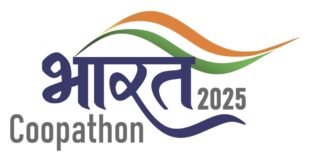 Dr. Seema Javed
Dr. Seema Javed
In the central Himalaya, the Gangotri Glacier System (GGS) feeds one of India’s largest rivers, the River Ganga. Scientists have modelled Gangotri’s meltwater over four decades and analysed how climate change is reshaping its components. The snow and ice reserves of the Hindu Kush Himalaya (HKH) are essential water resources for downstream populations, contributing to major rivers like the Indus, Ganga, and Brahmaputra.
Climate change has significantly altered the dynamics of glacier-fed hydrological systems, accelerating glacial retreat and shifting seasonal discharge patterns, which have profound implications for both upstream and downstream water availability.
Using the high-resolution Spatial Processes in Hydrology (SPHY) model — calibrated with field discharge records, geodetic satellite-derived glacier mass balance data, and snow cover maps — researchers analysed the composition of Gangotri’s streamflow from 1980 to 2020.
The breakdown shows that snowmelt dominates the annual flow, contributing 64%, followed by glacier melt (21%), rainfall-runoff (11%), and baseflow (4%). “Over the last four decades, the composition of flow from the GGS is changing due to climate change, and this study offers the most detailed picture yet of how those changes have unfolded,” says lead author Parul Vinze, a PhD scholar at the Glaci-Hydro-Climate Lab, IIT Indore.
“After 1990, the discharge peak in GGS shifted from August to July, linked to reduced winter precipitation and earlier summer melting,” she adds. Though the flow from GGS is snowmelt-dominated, over time, snowmelt has declined, while rainfall-runoff and baseflow have edged upward, subtly reshaping the basin’s hydrological balance.

Earlier studies, while valuable, were often limited by shorter records, coarser-resolution climate data, or fewer calibration datasets. This study builds on that foundation, providing a 41-year perspective and a more detailed analysis than has previously been possible, offering clearer estimates of the relative contributions of snowmelt, glacier melt, rainfall-runoff, and baseflow — which have varied across earlier research.
“Accurate modelling, backed by field data, is key for predicting future water availability in the Himalaya,” says Dr. Mohd. Farooq Azam, supervisor of the study and Senior Intervention Manager – Cryosphere at ICIMOD and Associate Professor, IIT Indore. The authors urge sustained field monitoring and the integration of high-resolution climate projections to refine future forecasts from glacierized basins.
Overall, the Ganga River has relatively less meltwater contribution at a basin-wide scale compared to the Indus Basin, yet at higher elevations such as the Gangotri Catchment, the runoff is dominated by meltwater. The observed changes in meltwater seasonality and runoff volume would severely affect hydropower generation and irrigation at higher elevations, says Dr. Azam.
 Jubilee Post News & Views
Jubilee Post News & Views





